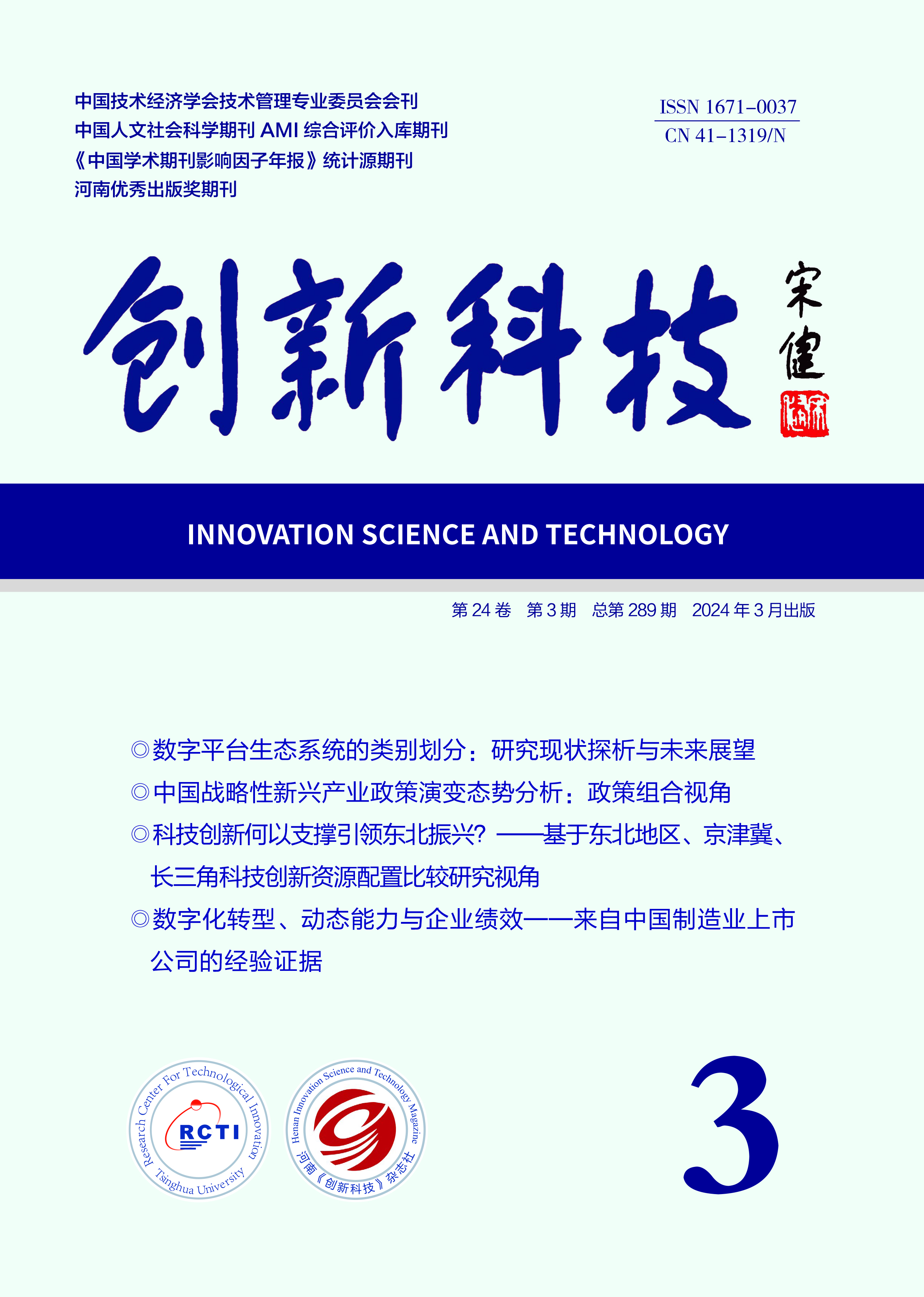INNOVATION SCIENCE AND TECHNOLOGY
Quick Search

All publication are peer-review
Peer review will take the from of double-blind review Judge objectively and impartially
There is no conflict of interest for the reviewer
Review articles shall be kept strictly confidential prior to publication
"New Quality Productive Forces and High-level Science & Technology Self-reliance" Column
Digital Intelligence Technology Empowers Enterprises with New Quality Productivity: Literature Review and Knowledge framework
Hou Erxiu1 , Kou Jia1 , Chen Jin2, 3 , Yin Ximing4 , Yang Zhen5
(1.School of Economics and Management, Inner Mongolia University of Technology, Hohhot 010051, China; 2.School of Economics and Management, Tsinghua University, Beijing 100084, China; 3.Research Center for Technological Innovation, Tsinghua University, Beijing 100084, China; 4.School of Management, Beijing Insti⁃ tute of Technology, Beijing 100081, China; 5.Institute of Industrial Economics, Chinese Academy of Social Sci⁃ ences, Beijing 100006, China)
Abstract: Enterprises are powerful drivers of the formation of new quality productivity. The new quality productivity of enterprises can bring about a new situation of technological innova⁃ tion and quality improvement in development. Digital intelligence technology plays a crucial role in enhancing the new quality productivity of enterprises, and the empowerment of enterprise new quality productivity by digital intelligence technology has become a focus of academic attention in recent years. This study uses CiteSpace bibliometric software, selects 299 relevant journal ar⁃ ticles from 2023 to March 2025. The study adopts two research methods: bibliometric analysis and content analysis. Analysis via CiteSpace software reveals that research in this field has been rapidly rising, with the literature primarily focused on "digital intelligence technology" that includes "digital technology", "data elements", and "artificial intelligence", as well as "new quality productivity in enterprises" and "digital new quality productivity". Cluster analysis identifies three major cat⁃ egories: driving factors, practical paths, and empowerment results of digital intelligence technol⁃ ogy empowering the new quality productivity of enterprises. The results show that digital intelli⁃ gence technology drives the formation of new quality productivity of enterprises through techno⁃ logical drivers, organizational drivers, and environmental drivers. In terms of practical paths, enterprises achieve the optimal allocation of production factors and the innovation of production paradigms through three paths: the release of multiplier effects through the marketization and integration of data elements zational processes and capability systems, and the new quality evolution driven by the integra , the dynamic reconstruction of organi⁃ ⁃ tion of digital and physical. Ultimately, it leads to three-dimensional leaps: human-machine col⁃ laborative new quality laborers replacing traditional labor, self-iterating intelligent tools reshap⁃ ing new quality labor materials, and data-driven intangible resources expanding new quality la⁃ bor objects. Finally, this paper builds a knowledge framework for this research field, revealing the dy⁃ namic transmission mechanism of digital intelligence technology empowering the new quality pro⁃ ductivity of enterprises following the sequence of "driving factors—practical paths—empowerment results", and proposes research prospects to provide references for future research on this topic.
Key words: digital intelligence technology; enterprise; new quality productivity; integration of digital and real economies; data element; data management; scene-driven innovation; artificial intelligence